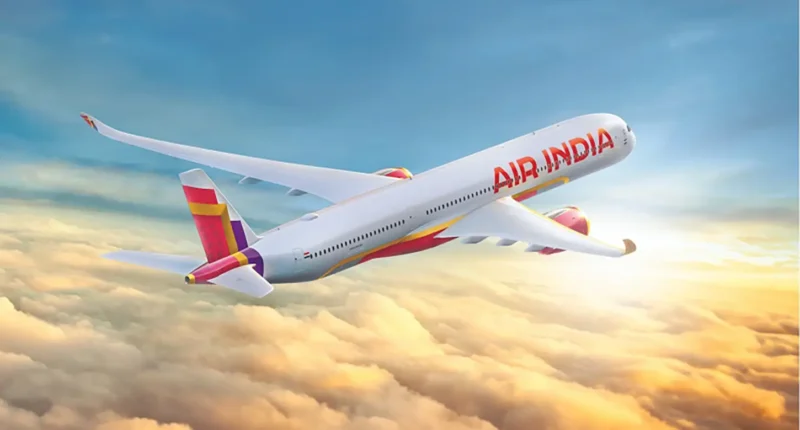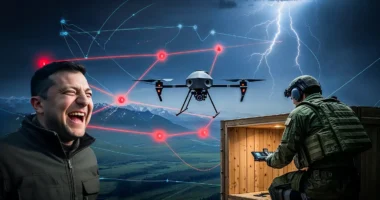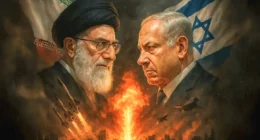On June 12, 2025, a normal day at Ahmedabad’s airport turned into a nightmare. Air India Flight 171, which was supposed to fly from Ahmedabad to London Gatwick, crashed just seconds after takeoff. This disaster became one of India’s worst aviation tragedies, taking the lives of almost everyone on board and several people on the ground.

The Flight and the People Onboard
Air India Flight AI171 was a standard international flight, it was using a Dreamliner Boeing 787-8 (registration VT-ANB). 242 people were onboard this plane, which includes 230 passengers and the other 12 are crew members. The passengers were from different countries which includes 169 Indian, 43 British, 7 Portuguese, and 1 Canadian citizen. The crew included Captain Sumeet Sabharwal, a very experienced pilot close to retirement, and First Officer Clive Kunder, a young pilot from an aviation family. The rest of the crew were also seasoned professionals, all dedicated to passenger safety and comfort.

The Aircraft’s Background
The Boeing 787-8 Dreamliner was a modern, advanced plane. It joined Air India’s fleet in January 2014. The Dreamliner is known for its strong, lightweight materials and fuel-efficient engines. Prior to this deadly accident, the 787 dreamliner had a perfect history of safety with no fatal crashes worldwide. Air India’s CEO, Campbell Wilson, later confirmed that this plane was well-maintained, with all necessary checks done on time and no known problems before the flight.
Takeoff and the Sudden Disaster
The plane took off from Ahmedabad at 1:39 PM local time. The weather was good—clear skies and light winds. At first, everything seemed normal as the plane climbed to about 625 feet. But within seconds, something went wrong. The plane’s transponder (which helps track the plane) stopped working, showing that trouble had started.
Security cameras near the runway captured the whole event. The video showed the plane taking off, flying straight for a few seconds, and then starting to descend even though its nose was still pointed upwards. The landing gear never retracted, and there was no sign of fire or smoke from the engines at first. About 17 seconds after takeoff, the plane began to lose height. The pilots quickly sent a mayday call, saying they had lost “power and thrust,” which was their last message to air traffic control.
The Crash and What Happened Next
The whole flight lasted only about 30 to 33 seconds after takeoff. The plane crashed into the Civil Hospital campus area, hitting the doctors’ quarters and the student hostel at B.J. Medical College, about 1.5 kilometers from the runway. The crash caused a huge explosion as the plane’s fuel caught fire, sending a giant fireball and thick smoke into the sky. The heat was so intense—about 1,500°C (2,700°F)—that it made identifying victims extremely difficult.
Tail of the plane remained on top of the hostel building. Inside, debris was everywhere—aircraft parts stuck in walls, students’ belongings scattered, and even uneaten meals left behind, showing the crash happened during lunchtime.
The Human Cost
The loss of life was overwhelming. Out of everyone on the plane, only one person survived—a British man named Vishwashkumar Ramesh, who was sitting in an emergency exit seat. The side of the plane where Vishwashkumar was sitting got broken and landed towards the ground floor of hostel building. He unbuckle his seatbelt and jump through an opening. He was badly hurt and confused, and sadly, his brother, who was also on the flight, did not survive.
On the ground, 19 people were killed, including four medical students and the wife of a doctor. At least 60 people were injured, with many students needing hospital care. Among those who died was Vijay Rupani, the former Chief Minister of Gujarat. His identity was confirmed by DNA testing because the fire was so severe.
Emergency Response
Rescue teams arrived quickly. The Indian Army, National Disaster Response Force, local fire departments, and other agencies all worked together. The conditions were dangerous—rescuers had to wear oxygen masks and wet cloths to protect themselves from the heat and toxic smoke. Most of the rescue work was done by the State Disaster Response Force, who worked bravely despite the risks.
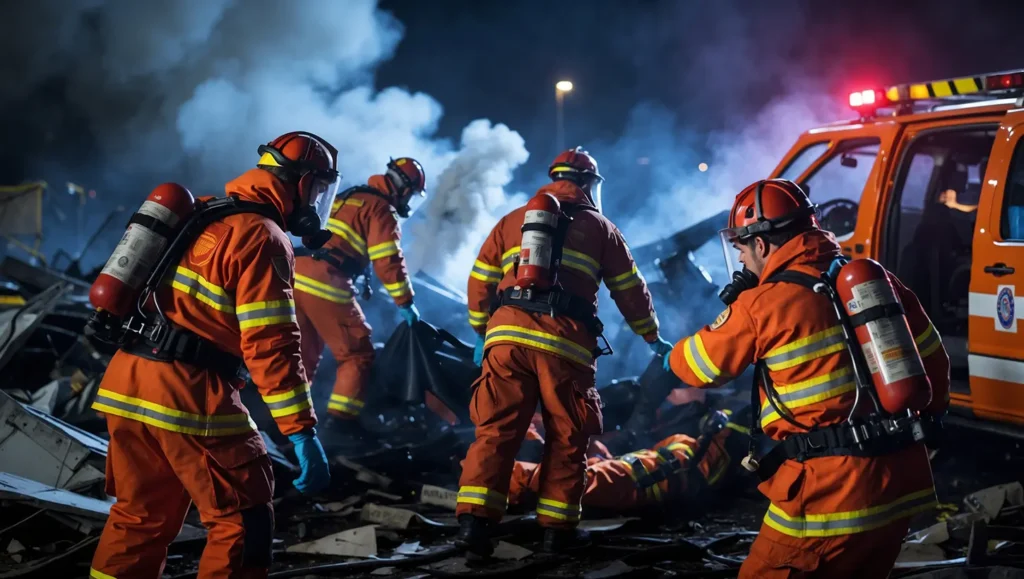
Within half an hour, extra ambulances arrived to help. The injured were taken to Ahmedabad Civil Hospital, which became the main center for treating survivors and identifying victims. The airport was shut down for about three hours to make sure everything was safe. Air India set up a special support team to help families affected by the crash.
The Investigation and Black Box Recovery
India’s Aircraft Accident Investigation Bureau (AAIB) started investigating right away, working with experts from the U.S. since the plane was American-made. The two black boxes (the flight data recorder and cockpit voice recorder) were found within a few days—one on the building’s roof and the other in the debris. Both items were kept safe sent to Dehli for further investigation and analysis. Experts from India and America started going through data to find out what possibly happened.
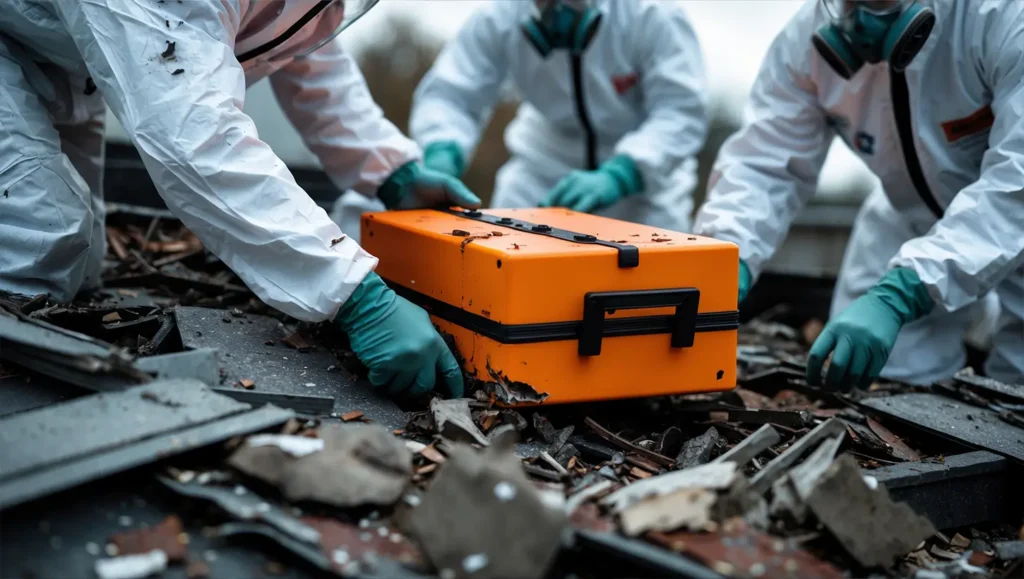
However, some experts criticized the investigation for being slow. Two weeks after the crash, a lead investigator still hadn’t been officially named, even though international rules say this should happen right away.
What Could Have Caused the Crash?
The investigation is ongoing, but experts have suggested a few possible reasons:
- Engine Failure: Some think both engines might have failed. The plane’s backup power system (called the Ram Air Turbine) deployed automatically, which usually happens if both engines stop working. The pilot’s calling a mayday message and mentioning about losing “power and thrust” is supporting this idea.
- Flap Problems: Investigators checked if there was an issue with the plane’s flaps (which help with takeoff), but early reports say the flaps were set correctly.
- Landing Gear: The landing gear never retracted, and investigators are looking into why.
- Fuel System: There could have been a problem with the fuel system.
Investigators have said that a bird strike is not a main focus, and anti-terrorism teams were included just to be safe.
Official Reactions
The crash shocked the nation. Prime Minister Narendra Modi called it “heartbreaking beyond words” and ordered all agencies to help. The Civil Aviation Minister, Kinjarapu Ram Mohan Naidu, went to Ahmedabad and promised a full report within three months. Air India’s chairman said the airline’s main goal was to help families and support rescue teams. The airline also set up a hotline for information and support.
The Directorate General of Civil Aviation (DGCA) ordered extra safety checks on all Boeing 787 planes in India, especially those with the same type of engines as the crashed plane.
The World Responds
Leaders from around the world sent their condolences. The British Prime Minister, Keir Starmer, said he was devastated, especially since many British citizens were on board. King Charles III and Queen Camilla, as well as leaders from the U.S., Canada, Europe, and Australia, all expressed their sympathy and support for India during this difficult time.
Identifying the Victims
Identifying those who died was very hard because of the intense fire. DNA testing centers were set up, and families were asked to provide samples to help match remains. By June 25, most victims had been identified through DNA or facial recognition, but the process was slow and painful for families.
Support and Compensation for Families
Air India, as required by international law, must pay at least Rs 1.5 crore (about $180,000) to each victim’s family. The Tata Group, which owns Air India, also promised an extra Rs 1 crore (about $120,000) for each family, including those who lost loved ones on the ground. The company also agreed to pay for medical treatment for the injured. Interim payments were given to help families with urgent needs, and a helpdesk was set up to guide them through the claims process.
The total insurance claims from the crash could reach around Rs 4,000 crore (about $470 million), including the cost of the destroyed plane and engines, as well as compensation for victims.
Safety Lessons and the Future
The crash of Flight 171 was the first fatal accident for a Boeing 787 since it started flying in 2011. This has made airlines and regulators look more closely at the safety of these planes and their engines. After the crash, the DGCA ordered special checks on all similar planes in India. The accident also showed how important it is for airports and hospitals to be ready for emergencies.
Mental health experts noticed that many people became more anxious about flying after seeing the crash footage. Some even needed professional help to deal with their fears.
The Ongoing Investigation
The investigation is still going on, and everyone is waiting for clear answers. The black box data will help experts understand exactly what happened. International experts, including those from the U.S., are working with Indian authorities. There was some concern when a UN investigator was not allowed to join, but India has said it will cooperate with the U.S. and follow international rules.
Remembering the Victims
The crash deeply affected families, students, and the wider community. To honor the dead victoms Candle Light vigils were held in Ahmedabad. Survivors and families are still grieving and trying to recover. The only survivor, Vishwashkumar Ramesh, lost his brother in the crash and has faced both physical and emotional pain. His story is a reminder of the human cost of such tragedies.
Conclusion
The Air India Flight 171 crash is a heartbreaking reminder of how quickly life can change. In just half a minute, a normal flight turned into a disaster that took 260 lives and left many families forever changed. The investigation will hopefully provide answers and help make flying safer for everyone. For now, the world mourns with the families, and India remembers those lost in this terrible tragedy
WATCH A DETAILED DOCUMENTARY ON USA-IRAN-ISRAEL CLICK HERE
READ ARTICLE ON Trump Bomb Iran: The Red Line Crossed CLICK HERE
